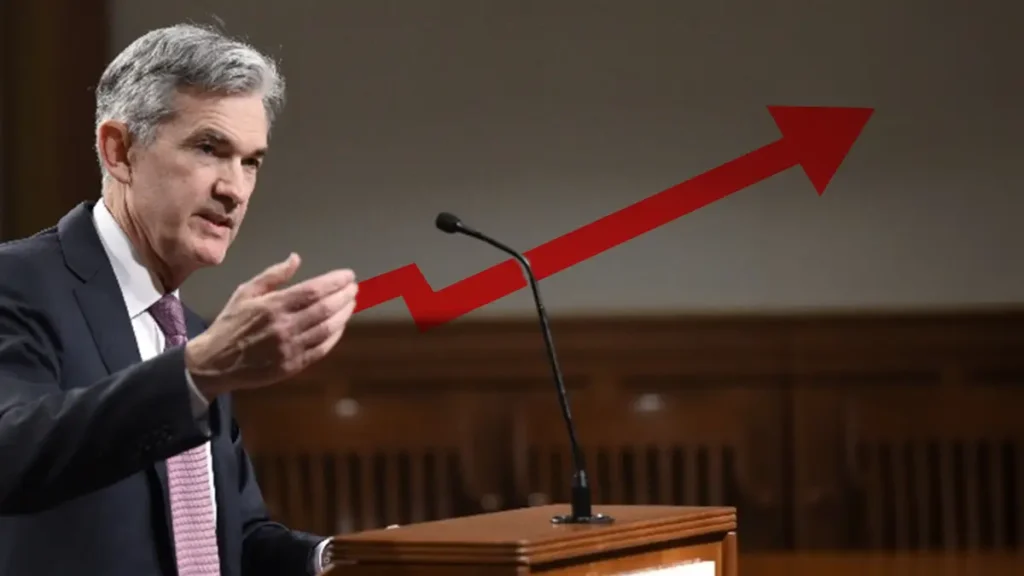Federal Reserve Chairman Jerome Powell has re-affirmed the central bank’s commitment to its 2% inflation mandate. This mandate comes as he acknowledges the recent drop in high inflation.
Also, Powell avoided endorsing a specific policy direction during this highly awaited address to the Economic Club of New York. He was showing no leaning toward increasing interest rates in his speech.
As Powell addressed, futures market traders eliminated any chance of a November rate increase and reduced December’s likelihood.
He acknowledged the strides made in curbing high inflation. Still, he emphasized the need for vigilance in pursuing the central bank’s objectives.
In his prepared statement, Powell stressed that despite some positive data in recent months, the US stays at high inflation.
He emphasized that a few favorable data points mark just the initial steps in establishing confidence regarding sustainable inflation reduction.
Powell affirmed that despite expected challenges and a gradual process, he and his colleagues share an unwavering commitment to achieving a sustainable 2 percent inflation rate.
Powell sees uncertainties in high inflation slowdown
Uncertainty looms about the Fed’s direction following a series of interest rate increases intended to combat high inflation.
Stocks rebounded, and the 10-year Treasury yield retreated from its session peak after Powell’s speech.
Powell expressed his view that current interest rates don’t appear excessively high and stated, “It doesn’t feel like a tight policy.”
However, he acknowledged that “higher interest rates are challenging for everyone.”
Recent data reveals that though inflation still exceeds the target, the monthly increases have slowed, and the annual rate dropped to 3.7% from over 9% in June 2022.
Powell stated that data in recent months demonstrate continuous advancement in achieving both the dual mandate objectives, maximum employment, and price stability.
Inflation control risks
Fed policymakers engaged in interest rate increases to address a labor market supply-demand mismatch.
Since March 2022, they’ve implemented 11 rate hikes, totaling 5.25 percentage points, lifting the benchmark rate to its highest point in approximately 22 years from near-zero levels.
Powell emphasized that the economy is comfortably distant from the effective lower bound on interest rates.
These remarks coincide with the day when initial jobless claims reached their lowest weekly point since early 2023.
This suggests that the job market remains constrained and may contribute to inflationary pressures.
The strong job growth in September and limited layoffs might put risk in advancements in inflation control.
Powell cautioned that if signs of ongoing above-average growth or a stabilized labor market emerge, it could endanger high inflation control progress.
FED eyes patient approach
Various Federal Reserve representatives have expressed the view that the Fed can adopt a patient approach moving forward.
Even those who advocate tighter monetary policy have suggested that pausing rate hikes is prudent while assessing their expected delayed economic effects.
It’s widely anticipated in the markets that the Fed will refrain from implementing further rate hikes, but uncertainties linger. Powell refrained from committing to future policy directions.
He cited uncertainties and risks and stated that the Committee is proceeding cautiously and will base decisions on incoming data and the evolving outlook.
The extent of further policy adjustments and the duration of policy restrictiveness will depend on a comprehensive evaluation of data and risk dynamics.
Climate Protesters disrupt FED chairman’s speech
Protesters from the Climate Defiance group disrupted the speech’s beginning by approaching the podium at the club’s dinner.
They displayed a sign reading “Fed is burning” with the words “money, futures, and planet” encircling it.
Following a brief interruption, Powell acknowledged that the labor market and economic expansion might have to decelerate to realize the Fed’s objective.
Powell indicated that the historical data implies achieving a stable 2 percent inflation rate might demand a phase of subpar economic growth.
